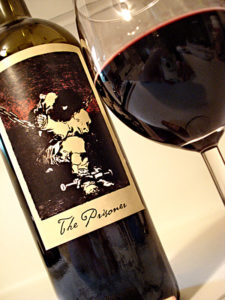Editor’s Note: This biweekly column is sponsored by Dominion Wine and Beer (107 Rowell Court, Falls Church). This column is written by Dominion owner Arash Tafakor.
A new market of red wine has emerged the past few years. Almost out of nowhere, California Red wine blends became one of the hottest wine categories. With brands like Apotic Red and Ménage A Trios’, wine consumers love the smooth easy drinking, slightly sweet taste of these red wines. Almost all big wineries have come out with a red blend the past few years as well. St. Francis, Bogle, Fetzer, Cupcake and Barefoot just to name a few.
But before these inexpensive red wine blends hit the market, red wine blends have been around for decades. France’s famed Bordeaux and Cote du Rhone regions are all blends. Wine makers in Bordeaux can use up to seven different grapes for the blend. Rhone wines can use numerous grapes in the blend with certain percentages of each grape.
 High end California wine such as Opus One and Verite are top-notch red blends. Most recently a small group of California wine makers started the Meritage Association in 1988. The group’s goal was to make a Bordeaux style blend with guidelines and laws as in France. Meritage was the entire craze in the 90’s but soon took a big decline. The group charges a licensing fee to winemakers that want to use the Meritage label and have strict guidelines on other winemaking procedures.
High end California wine such as Opus One and Verite are top-notch red blends. Most recently a small group of California wine makers started the Meritage Association in 1988. The group’s goal was to make a Bordeaux style blend with guidelines and laws as in France. Meritage was the entire craze in the 90’s but soon took a big decline. The group charges a licensing fee to winemakers that want to use the Meritage label and have strict guidelines on other winemaking procedures.
These laws and guidelines created by the Meritage Association made it easy for wine makers to simply make their own red blend using whatever grape they desire. In the United States the governing body of wine making and guidelines is The Bureau of Alcohol, Tobacco, Firearms and Explosives. As you may assume, the ATF doesn’t have as strict wine making guidelines as, say, France.
These loose regulations in the United States winemaking industry give winemakers complete freedom to use any grape they can get their hands on. Though most inexpensive California blends are Zinfandel based, new red blends come out everyday with grapes you have never seen in a California wine. With good winemaking techniques, wine makers have catered perfectly to the American palate and made this category of wine here to stay.
Be sure to check out Part 2 next time. I will list some of my favorite non-French and non-Meritage blends from all over the world with price ranges that should fit any budget.
The views and opinions expressed in the column are those of the author and do not necessarily reflect the views of ARLnow.com.


